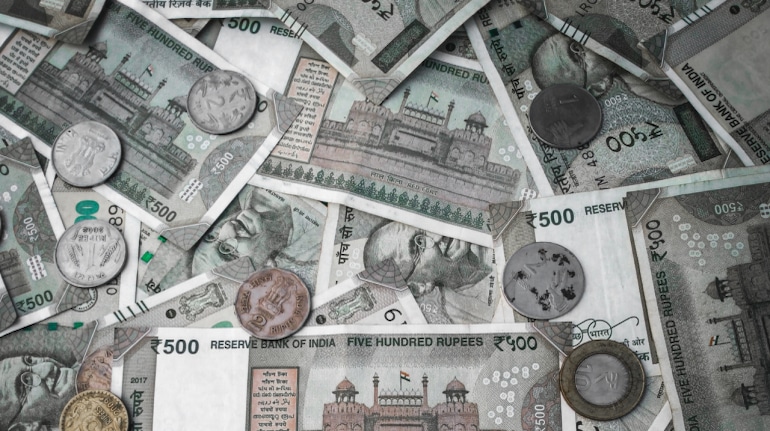



In line with our expectation, the Monetary Policy Committee (MPC) and the Reserve Bank of India (RBI) maintained a complete status quo on the accommodative stance, repo rate and reverse repo rate in the final scheduled policy review for FY2022. With the domestic economic recovery yet to broad-base, and inflation expected to recede in FY2023 from its base-effect led peak in the ongoing quarter, the MPC chose to continue to be growth-supportive.
Moreover, the split of votes for maintaining the stance as accommodative remained at 5:1. The upcoming minutes of the February 10 meeting will help us understand whether any additional MPC member is on the threshold of choosing to withdraw policy support.
As expected, the RBI chose not to hike the reverse repo rate along with the February 2022 MPC review, which we believe would have accelerated the rise in yields, and thwarted the cooling impact of the recent auction cancellation.
The MPC retained its inflation projection for FY2022 at 5.3 percent, with Q4 FY2022 being seen at 5.7 percent. Based on the assumption of a normal monsoon in 2022, the MPC estimated the CPI inflation for FY2023 at a relatively benign 4.5 percent (Q1 FY2023 at 4.9 percent; Q2 at 5 percent, Q3 at 4 percent and Q4 at 4.2 percent), with risks broadly balanced.
We are less optimistic on the outlook for inflation; we believe it will print between 5.7-6 percent in Q4 FY2022, suggesting a full year average of 5.5 percent, exceeding the MPC’s 5.3 percent estimate. Although healthy reservoir levels could mitigate the impact of a sub-par monsoon, we believe core pressures will keep the average headline CPI inflation at 5 percent or above in FY2023.
The committee placed the forecast of real GDP growth for FY2023 at a sobering 7.8 percent (Q1 FY2023 at 17.2 percent, pushed up by low base of the second wave, Q2 at 7 percent, Q3 at 4.3 percent, and Q4 at 4.5 percent), well below our own estimate of 9 percent. In particular, the MPC's forecast of a 4.3-4.5 percent GDP growth in H2 FY2023 belies conviction in a back-ended pickup in growth driven by government and private capex.
Given the reigning uncertainty, imminent policy normalisation was not telegraphed, as reiterated by the comment that continued policy support is warranted for a durable and broad-based recovery. With this, a shift to a neutral stance in April 2022 appears to be ruled out, unless the CPI inflation exceeds the upper threshold of 6 percent in both January and February 2022.
Our new base case is a change in stance in June 2022, followed by two repo rate hikes of 25 bps each in August 2022 and October 2022, guided by our view that inflation will not moderate appreciably in H1 FY2023. A calibrated increase in the reverse repo hike could commence from Q1 FY2023, although we still expect it to be dovetailed to, rather than preceding, the stance change.
While yields had spiked after the Budget, the subsequent partial cancellation of the G-sec auction held on February 4, followed by a complete cancellation of the auction to be held on February 11, after a review of the Government of India’s cash position, helped to partly reverse this trend.
Subsequently, several factors caused the 10-year G-sec yield to cool back to pre-Budget levels on February 10. Firstly, the tone of the policy review was much more dovish than expected, with a very strong focus on maintaining policy support to growth, and relatively benign inflation forecasts. Secondly, the return of the reference to an orderly evolution of the yield curve suggests more active yield management going ahead, in spite of the global rise in yields.
Thirdly, the enhancement of the voluntary retention route (VRR) limits for investments by foreign portfolio investors by Rs 1 trillion to Rs 2.5 trillion is a positive move. This may pull in some additional funds amidst the rise in planned government borrowings, precluding the need for an OMO purchase programme.
The direction that yields will chart over the next six months is clearly upwards, with the 10-year likely to cross 7 percent in April 2022 once next year’s borrowing programme commences. However, it is likely to climb more slowly thereafter, given the postponement in the likely timing of the first repo rate hike to August 2022 or later, from our earlier expectation of June 2022. After that, the timing of bond index inclusion will guide where yields level off in H2 FY2023.
Aditi Nayar is Chief Economist, ICRA Limited. Views are personal, and do not represent the stand of this publication.
Discover the latest Business News, Sensex, and Nifty updates. Obtain Personal Finance insights, tax queries, and expert opinions on Moneycontrol or download the Moneycontrol App to stay updated!
Find the best of Al News in one place, specially curated for you every weekend.
Stay on top of the latest tech trends and biggest startup news.